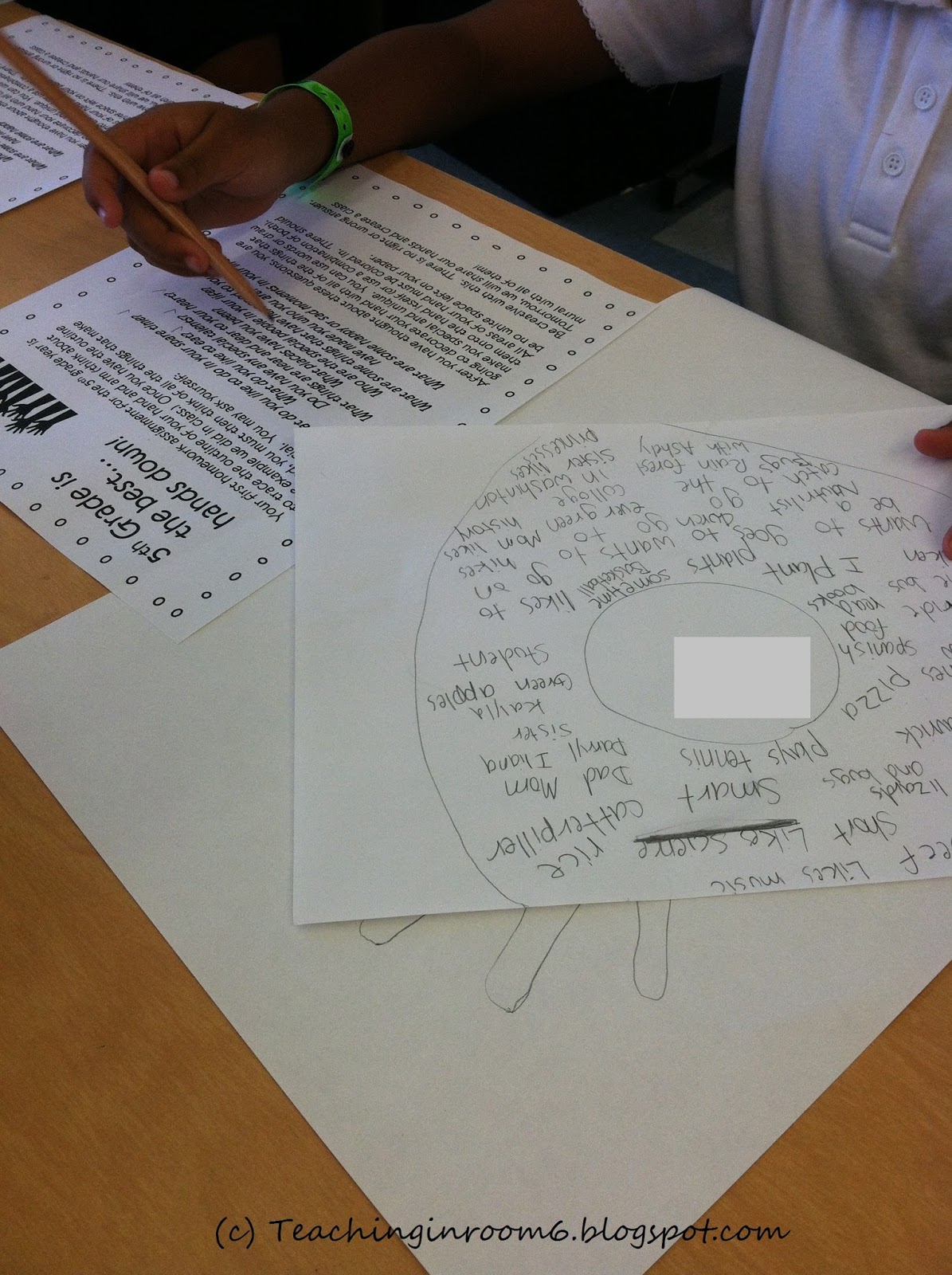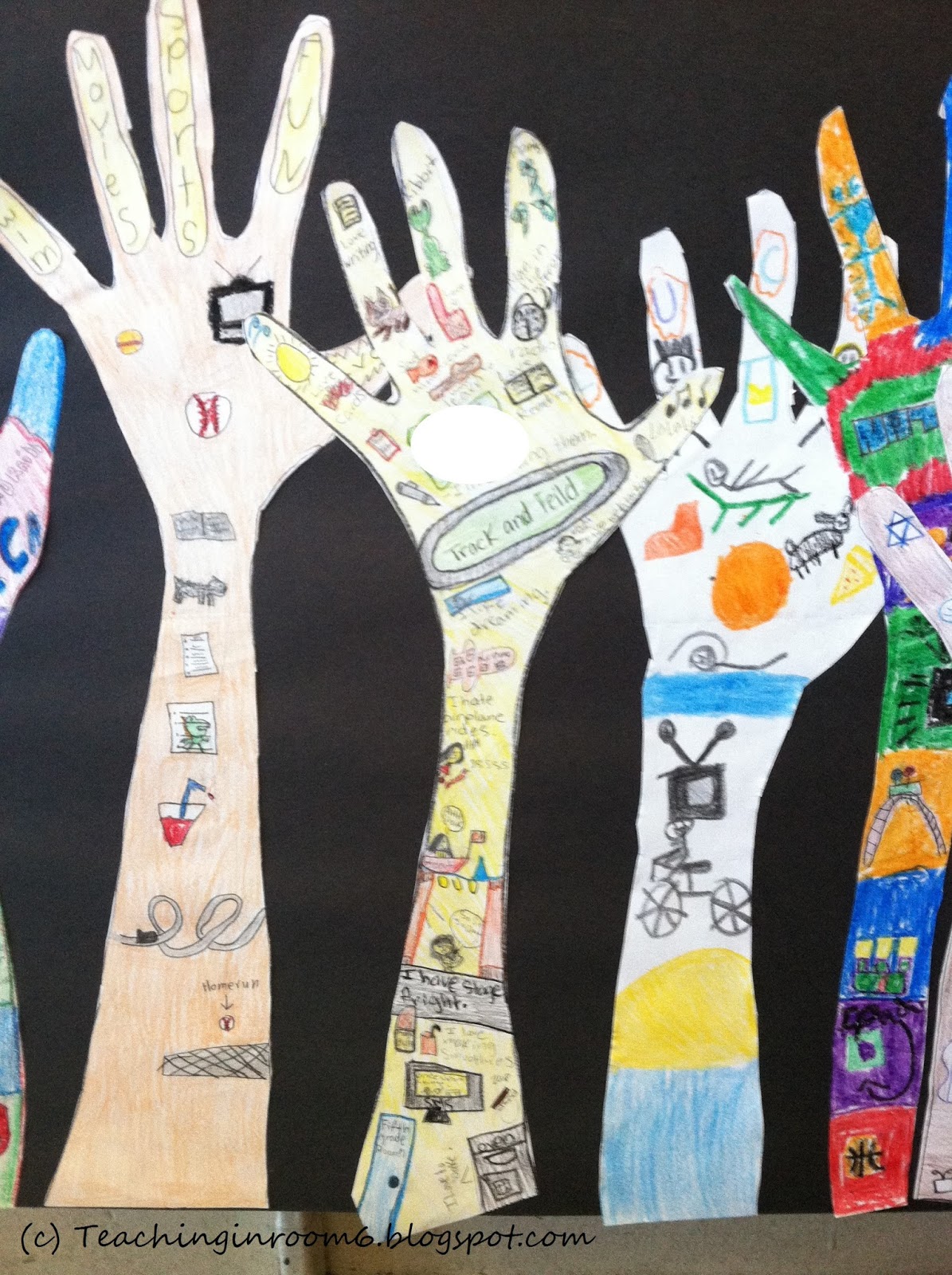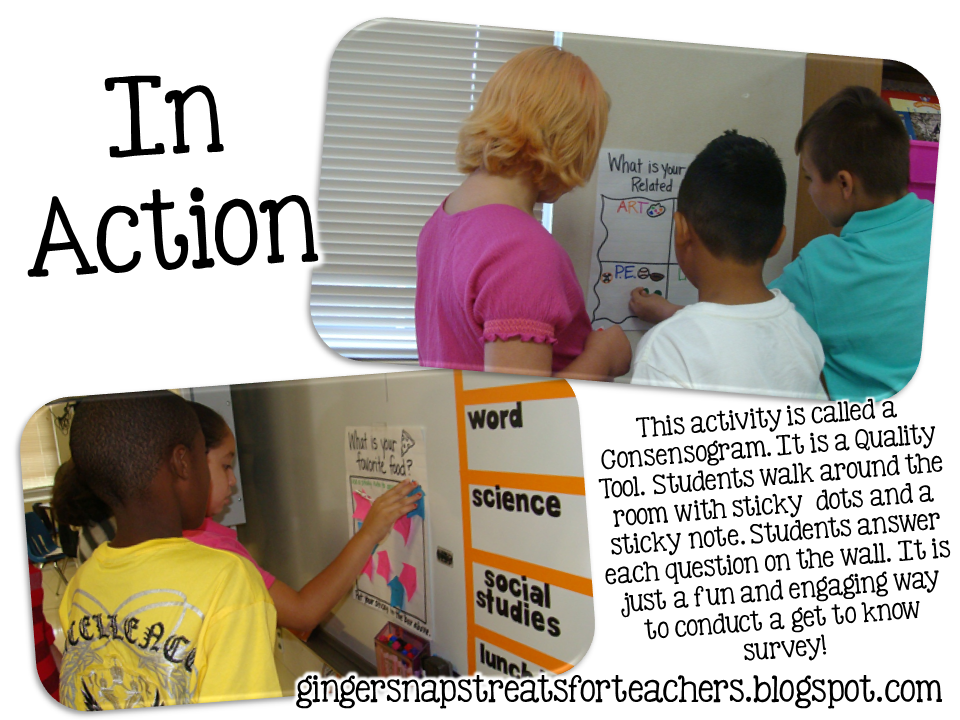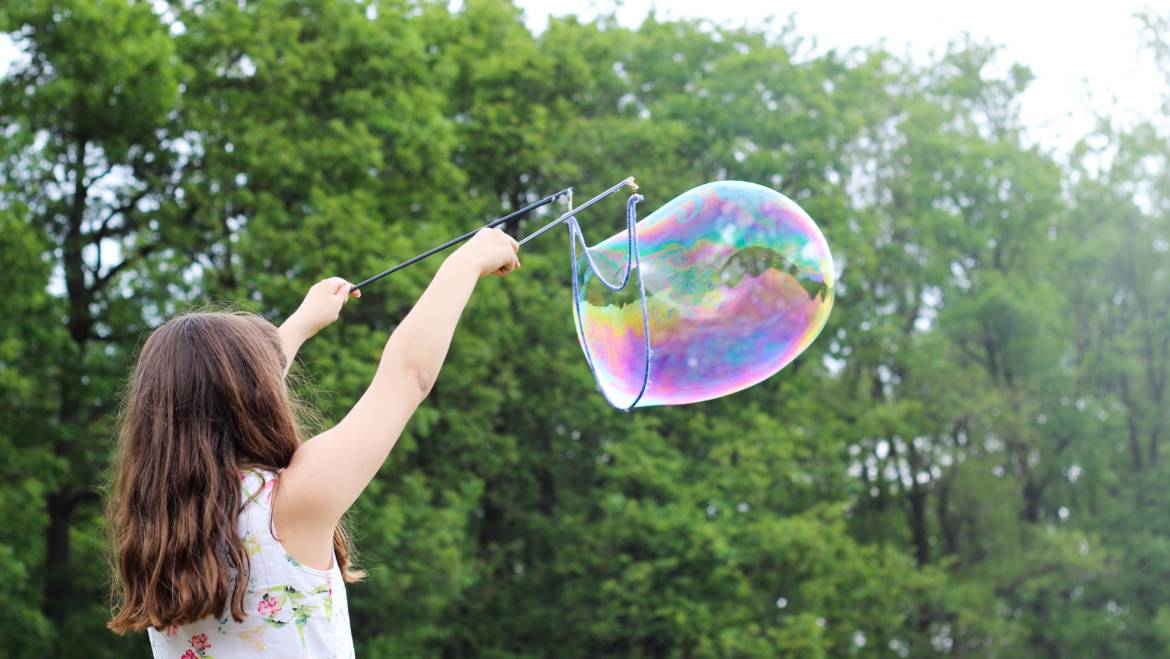S. Evelyn Cimesa | August 22, 2016 | Classroom Activities
The first day of school – the alluring, exhilarating, and exhausting adventure that carries us through the school year. It’s the day that teachers are waiting for; the summer of preparation is over, and now it’s time to tackle your classroom with the enthusiasm you’ve reserved for this moment.
Your students are probably just as nervous and excited as you are. They likely don’t know all of their classmates very well, and sometimes they feel uneasy in such a new situation with other people.
Depending on the age of your students, you may need to spend a few days getting everyone comfortable. So we’ve rounded up 10 of our favourite classroom icebreakers to help you and your students get to know each other. Try some of them out and let us know what you think!
1. All Hands In, from Teaching in Room 6
Teach their fellow classmates about themselves in a visual way.
First, you have your students create Circle Maps about themselves. Ask them: “What makes us special?”, “What are some things that have shaped us?”, “Where did you go in your life?”, etc.

Circle Maps. Image by Stephanie from Teaching in Room 6
After the students complete their circle maps, ask them to trace their arms and hands on a large piece of paper (11″ by 17″ is recommended). Have them cut them out and then decorate them using concepts and words from their circle maps.

Completed hands. Image by Stephanie from Teaching in Room 6.
2. Gallery Walk Censensograms, by Ginger Snap Treats for Teachers
Learn about your students through surveys!
You can use this activity to learn about your students; you can have them answer questions based on their likes, dislikes, favourites, and school subjects.

Gallery Walk Consensogram. Image by Ginger Snap Treats for Teachers.
3. Bingo Scavenger Hunt, by TeachHub
Get to know your classmates as you complete your bingo board.
This activity is really great for both introverts and extroverts. Before class starts, create a bingo board for each student in class. On each square, write a brief description, such as “Has a brother or sister”, “Has been outside the country”, “Favourite colour is blue”, etc.
Challenge students to go around the room and get their boxes signed by their classmates. The goal is for each student to get bingo (or to fill up the board – it’s up to you).

Scavenger Bingo. Image from The Science Life.
4. Lines and Blobs, by Cult of Pedagogy
A ridiculously easy game where students can feel secure.
In this game, students are prompted to either line up in some particular order (alphabetical by first name, for example), or to gather in groups based on something they have in common (eye colour).
Students don’t have to come up with anything clever, and they can respond to every situation without thinking very hard about it. It keeps them moving and talking, and it builds a sense of belonging in your classroom.

Blobs and Lines. Image by Cult of Pedagogy.
5. I’m Cool Because…, by Busy Teacher
Get them moving around and sharing experiences.
In this game, students are seated in a circle with one student (or teacher, if you or another teacher would like to start) standing in the center. You complete the phrase, “I’m cool because…” with something about yourself. Anyone who shares that with the speaker must stand up and find a new seat. The speaker will also be battling for a seat.
This game will always leave one individual without a seat, and so there will always be a speaker. Another variation of this game is “I have never”, where the individual states something they’ve never done and have students that have find a new seat.

Image from the Vines Early Intervention Services
6. This or That, by Cult of Pedagogy
Have students informally debate on light topics with their peers.
The instructor asks a question of opinion: “Which do you like better, _____ or _____?”, “Should all students be required to _______?”, “Which is worse: _____ or ______?”, etc. Then, each side of a classroom is designated as that answer. Students have to physically move to the side of the room that most closely represents their opinion and then talk about why they chose that spot with their peers.
This game is really great since it builds confidence with talking to, and in front of, peers.

Image by Compose Create
7. Take as much as you want, by Jennifer Tonzi, Elizabeth Popkin, and Brandy Woolbright
The game where students laugh and share things about themselves.
Bring a roll of toilet paper to your first circle time activity. Explain to your students that they’ll need it for the next activity, and tell them to “take as much as they need to complete the job” as they pass around the roll. Don’t tell them what the job is, though.
After everyone has had a good laugh over the amount of toilet paper they took, explain how the game works. For every piece of toilet paper the students ripped off, they must tell the class one thing about themselves. Some will realize that they took a lot of toilet paper, but you can help them find things to share with a little prompting.
This activity provides a nice way to find out about students’ personalities, families, likes, and dislikes — and the students really love it!
8. The “Me” Shield, by Debra Israel
Draw a visual representation of who you are and share it with the class.
For this activity, each student draws a large shield and divides it into four sections. We pose seven questions students can answer about themselves:
- What are three things you are good at?
- What do you like most about your family?
- What do your friends like about you?
- What do you think you can do better than almost anyone else your age?
- What do you dream about doing one day?
- What is something you have already done that makes you feel really good?
- What is one thing you are planning to change about yourself so you will be even better?
Each student writes his or her name at the top of the paper and answers four of the seven questions, one answer per section, on the banner. Students can write their answers or use a combination of art and writing to express themselves. The students volunteer to share their banners, and the teacher can proudly display them after the students have had a chance to decorate them.

The Me Shield. Image by Lorinda-Character Education
9. Candy Gets Kids Talking, by Laura MacDonald and Brandy Woolbright
A little candy makes the classroom experience a whole lot sweeter.
Note: Before preparing or distributing any food in the classroom, make sure you are aware of children’s allergies or dietary restrictions and caution children about choking hazards.
Bring in Skittles, one of your students’ favorite candies for sure! (Another favorite, M&Ms, are an option.) Tell the kids to take as many as they want. Most are pretty apprehensive — after all, it’s the first day of school! — so they usually take about ten to 15 Skittles. You should take some too. Next, pick out some fun music. For each Skittle they took the students must say one thing about themselves. You demonstrate first, of course.
An option: Each color of candy represents a category students must speak about. Example: orange = scary memories, red = great vacations, green = something about your family, blue = favorite hobbies, etc. The activity is a real icebreaker, and the kids love it! After that, they feel comfortable, and the class is no longer quiet.

Skittles. Image by AgencySpy
10. First Day Hunt, by Kim
To familiarize students with the school and personnel, I take students on a hunt for a certain goodie (cookies, watermelon, etc.) around the school. Before school begins I hide the goodie somewhere on campus and write out clue cards.
On the first day, we read the clues which take us around the school, into the office, the library, restrooms, playground, etc. As we read the clues we look for the goodie in all the places. The last clue leads us to the goodie. After the students find the treat they get to eat it. We also then create a map of the school and create a book about our hunt.

Plate of cookies. Image by Clip Art Kid.

